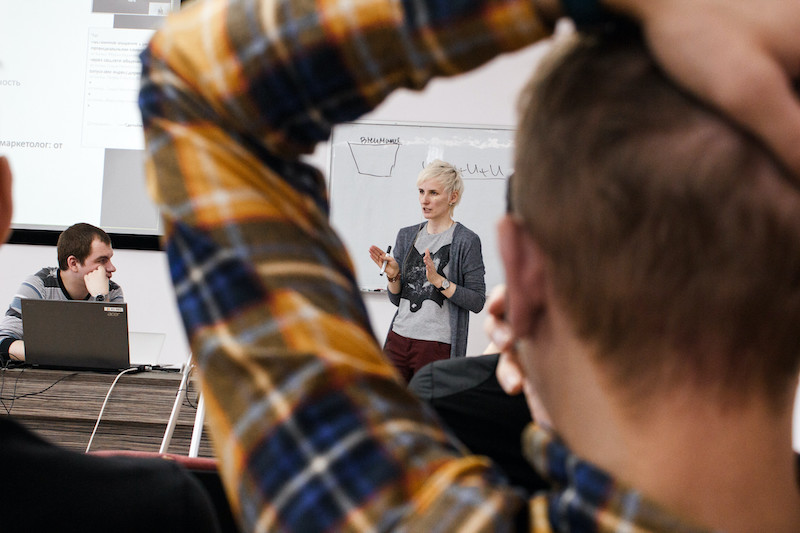Meet the FUTE materials
The FUTE material can be used when planning varied teaching experiences within existing curricula and subjects, involving pupils in co-learning and, most importantly, teaching pupils to work with framing and solving problems or challenges and to develop innovation skills.
The 42 FUTE method cards are the main tools of FUTE. You will use these to create design challenges that will engage pupils and teachers alike.
The method cards are divided into 5 color-coded categories of activities: Analysis, Research, Ideation, Creation, and Process.
Process cards are designed to be used all throughout your design challenge. Six process cards focus on collaboration and team dynamics; six other cards help you frame the challenge and evaluate information and ideas; and the last six cover team communication, visual tracking and presenting the challenge and solution to people outside the team.
Research cards and Analysis cards give you methods for gathering and visually analysing information and inspiration in order to create learning and insights.
Ideation cards and Creation cards help you take your research and analysis, develop ideas from it, and create solutions to your design challenges.
The main goal of the challenges in this training module is to get to know the design thinking methods in the set of method cards!
As there are many method cards, not all of them are part of this training module. We highly recommend you to read through all method cards before starting to solve your own challenges, as your design process will benefit from the use of relevant and varied design thinking methods.
Also, the set of method cards should be seen as a starting point. We encourage you to adjust methods or even add other methods you might find useful.
Example: A model for a typical innovation project
Hover over each card to discover it!
1/ Frame your design challenge and prepare your project with Process methods
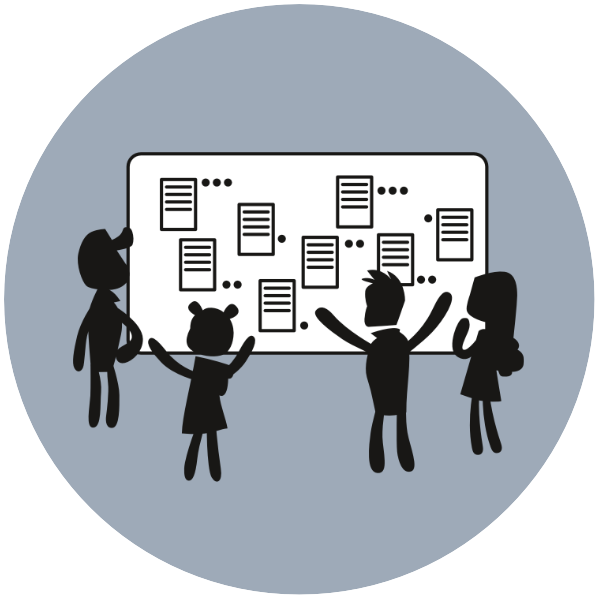
How to agree on rules for working together in a project or team .
Start by establishing Team Rules (Method #1),

Discover each group member’s goals, ambitions, and expectations.
and maybe talk about your Expectations (Method #3).
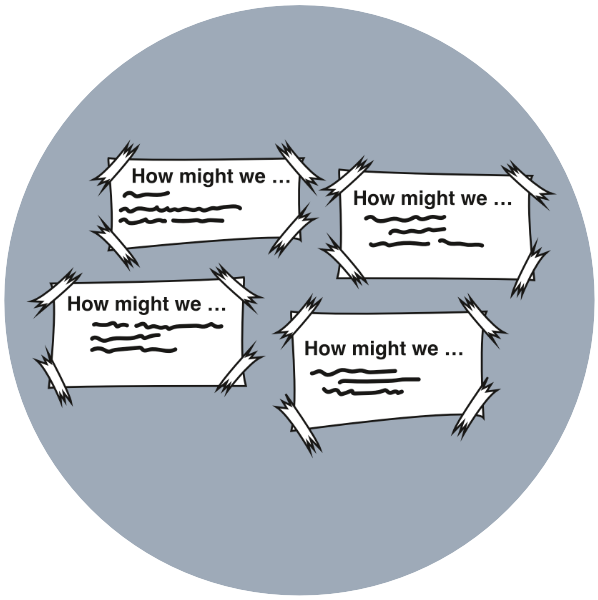
Transform problems into challenges and solutions by asking “How might we….”
Use Challenge Frame (Method #7) to discuss the focus of your work,
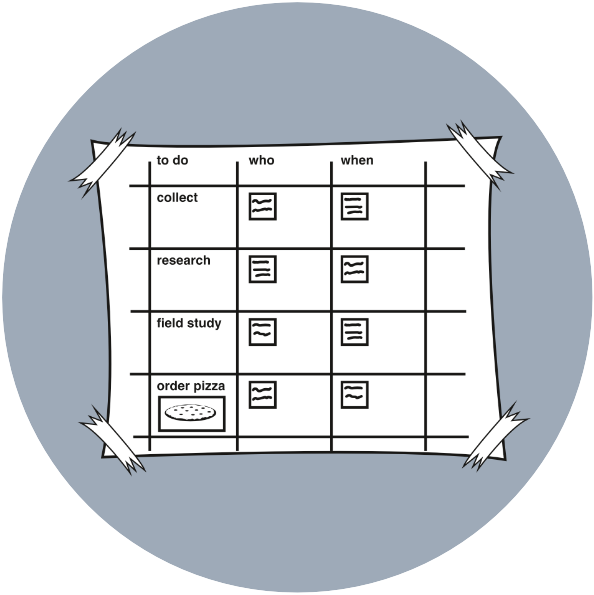
Make a shared ‘To Do’ list to help you think, plan, structure and prioritise.
plan the work with a ‘To Do’ List (Method #9),

Build a shared understanding of tasks and destination.
and put together a Road Map (Method #13).

Display collected project materials to get an overview and understanding.
Then establish a Data Wall (Method #15),
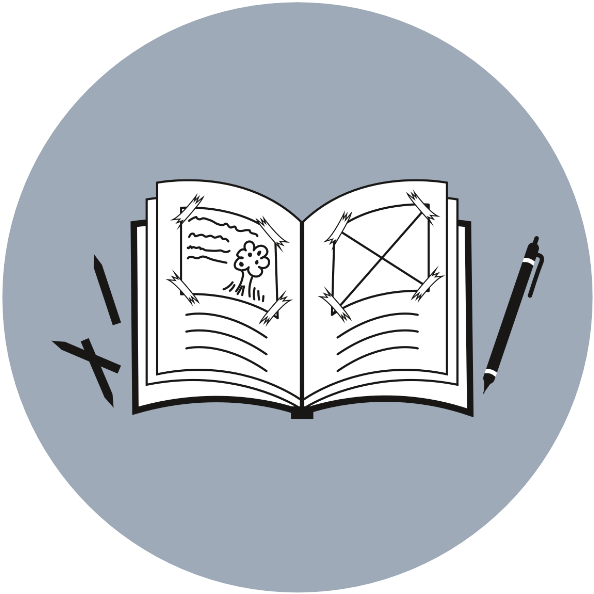
Keep a Log Book to collect ideas, boost memory and track your process.
and/or a Log Book (Method #14) using either cardboard and books or digital software and boards to create a shared visual representation of the work that has to be done.
2/ Perform your initial research and analysis using methods suited to your goals
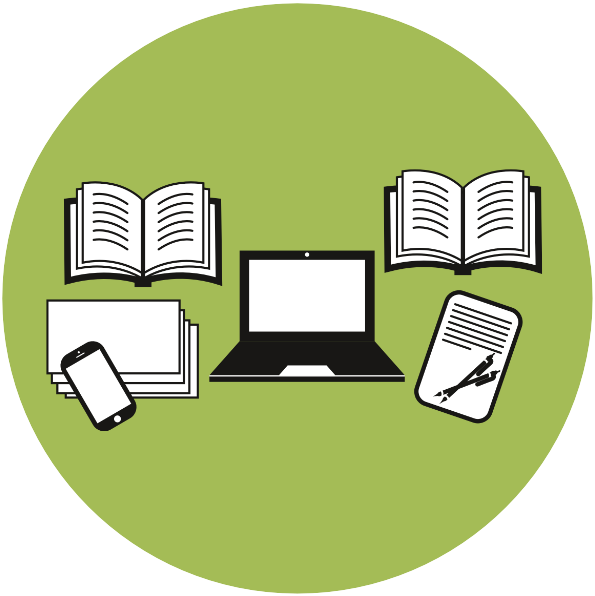
Do desktop research to access lots of knowledge quickly.
Do the initial research using Desktop Research (Method #20),
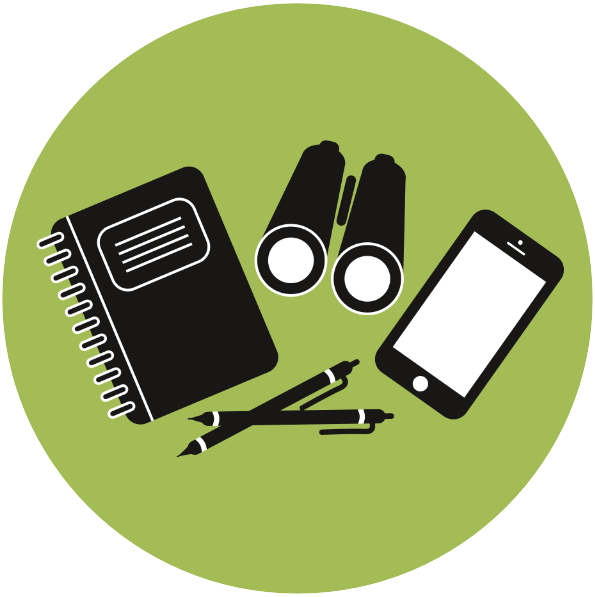
Go out into the world to experience, observe, and find inspiration.
and maybe The Anthropologist (Method #21).
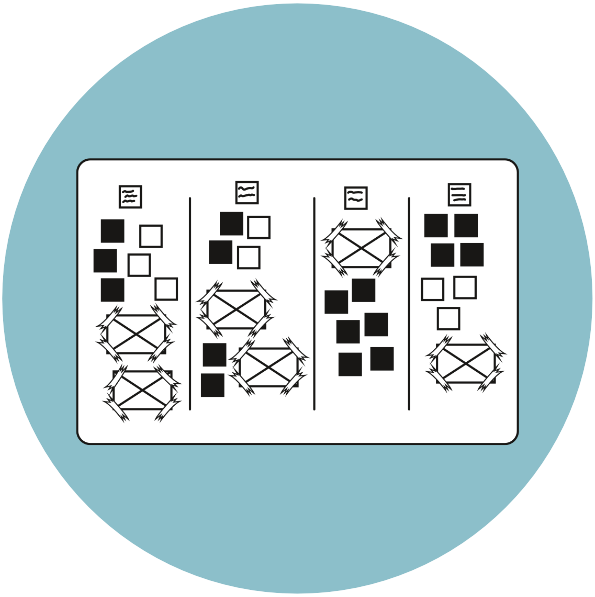
Discover what categories emerge from the research collected.
Analyse the research by using Clustering (Method #25),
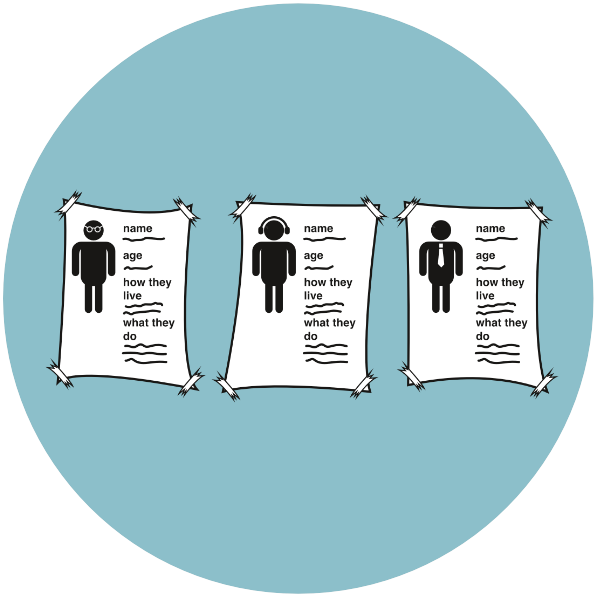
Transform research and information into fictional characters.
and maybe Personas (Method #29),
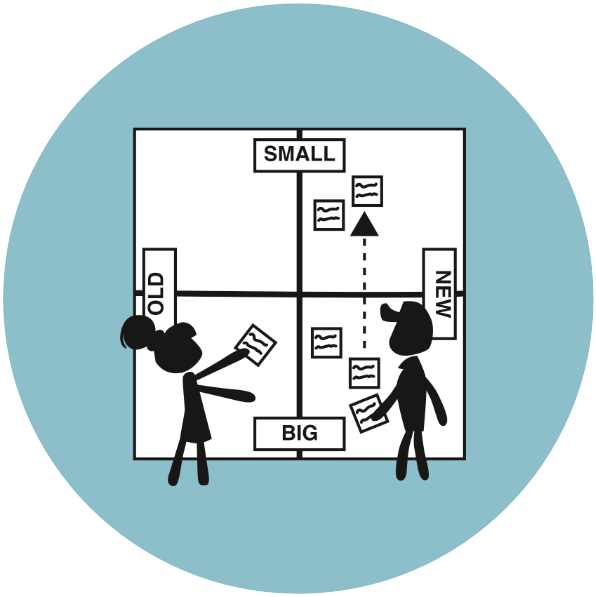
Organise and place elements into different diagrams to spark insights.
or Analytical Diagrams (Method #30).
3/ Take a break, revisit some Process methods to check that you’re on track, and see how you are doing in the group.
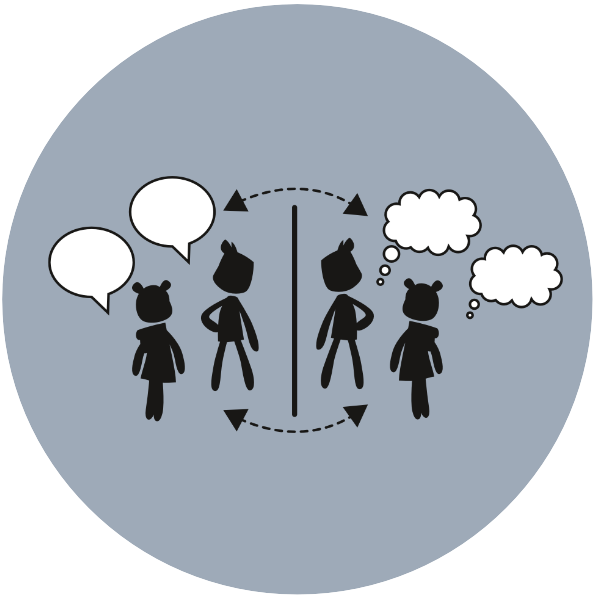
Alternate between opposite states of mind and activities to fuel the creative process.
Maybe you need to revisit the Team Rules (above) and also use the Do the Opposite (Method #4) to be more creative,
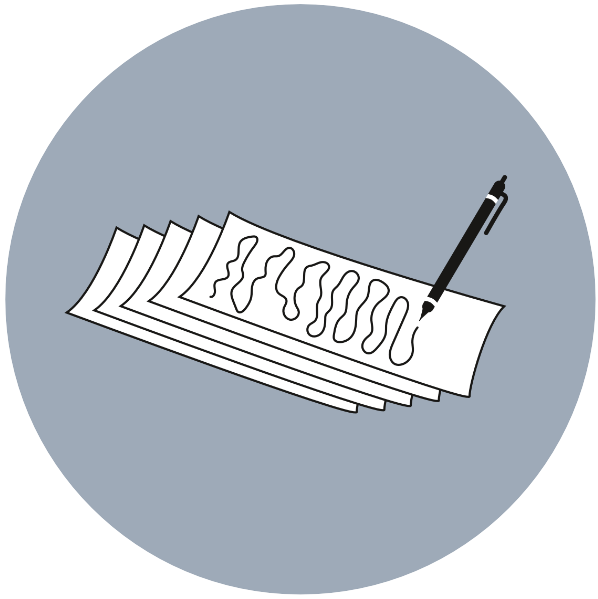
With Flow Writing, ”pour” out your thoughts to brainstorm or solve problems.
or use Flow Writing (Method #6) to learn what each team member is thinking about the project. Do a second round of Challenge Framing (above),

Evaluate and narrow the choices when faced with many different ideas.
and use Telescoping (Method #12) to reframe the challenge and decide which one you are working with. You may also need to revise the Road Map, Log Book, and Data Wall (all above).
4/ Time to put your research and analysis to practical use, with Ideation methods
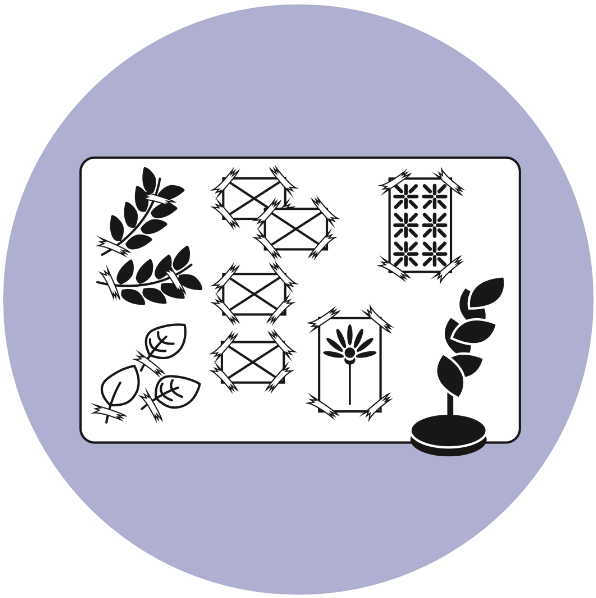
Find inspiration in exploits, objects, processes – and transform it into new ideas.
Take the next step in your design challenge with the Ideation Methods, maybe Inspiration (Method #32),
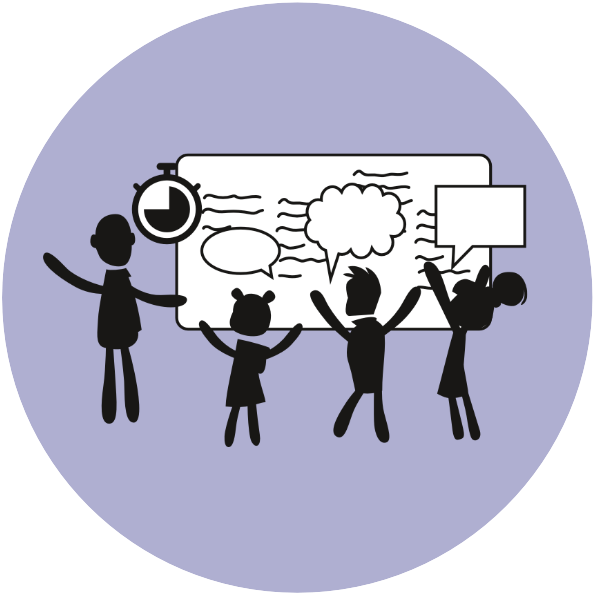
A classic method to develop multiple ideas with other people quickly.
or Brainstorm (Method #36). You might also use Process methods like Telescoping (above) to choose which ideas to develop further.
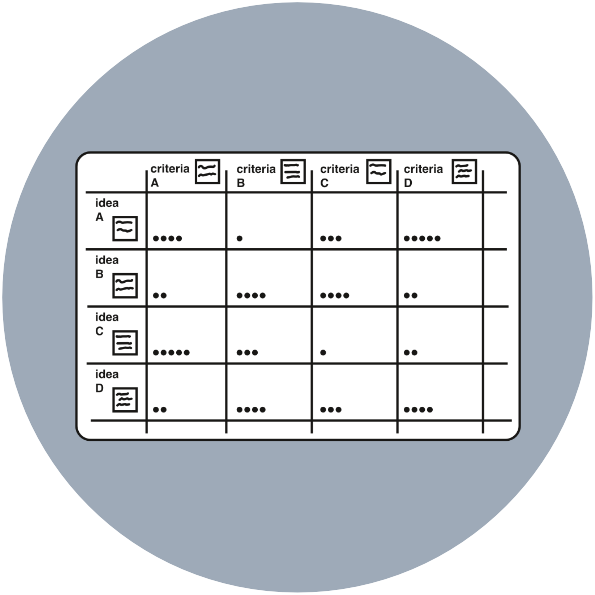
Discuss and select the most important aspects or criteria for a specific project.
You may have to establish some Success Criteria for the project (Method #11) to make it easier to choose the right ideas.
5/ Develop your chosen idea(s) using Creation Methods
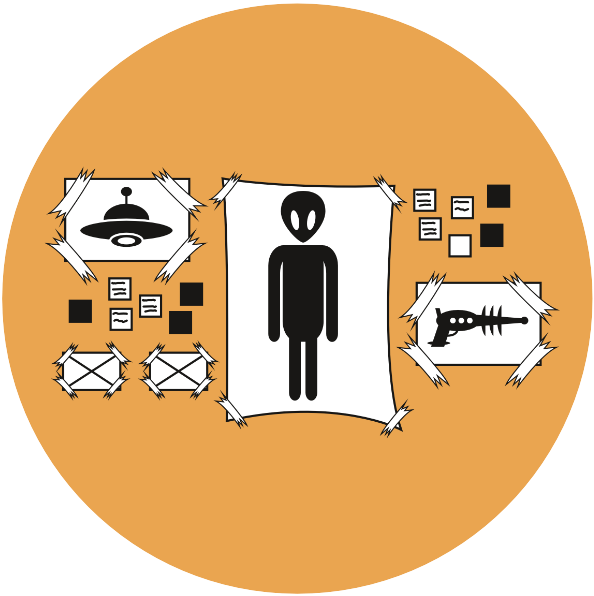
The Muse provides a visual, aesthetic, intuitive approach to keeping focus.
If you need some inspiration for stimulating the process, you could do The Muse (Method #38),
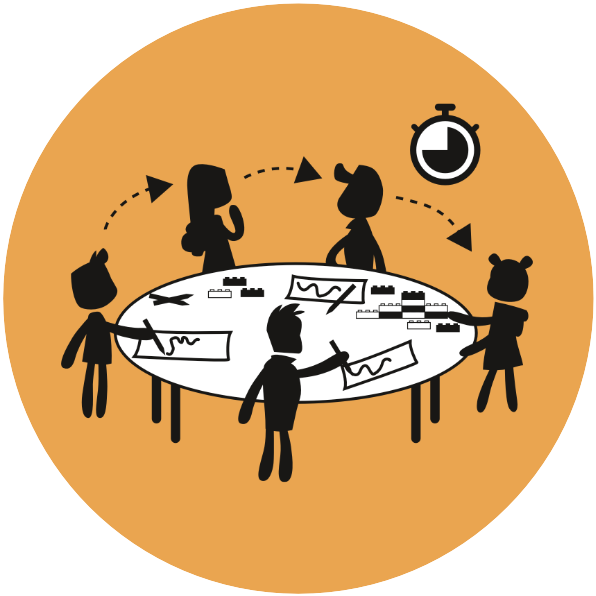
Use short bursts of individual work in a team to develop ideas.
and then perhaps The Relay (Method #39) to begin creating solutions and detailing the idea together as a team.
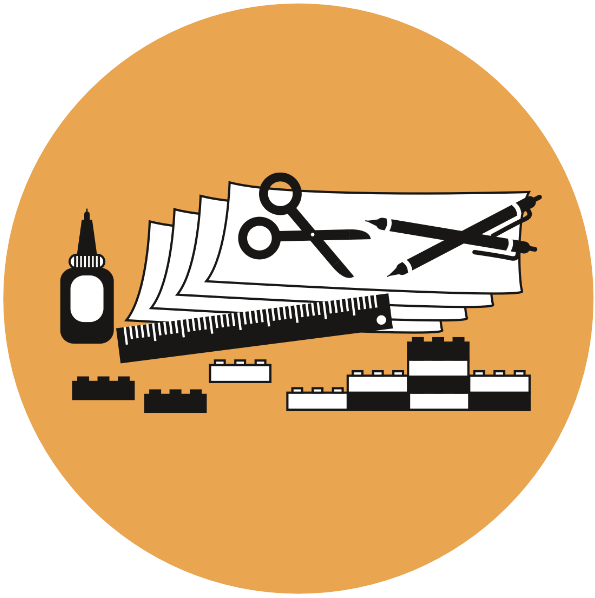
Build a 3D model to develop or showcase an idea.
Then, proceed to build a model of your solution with Prototyping (Method #40).
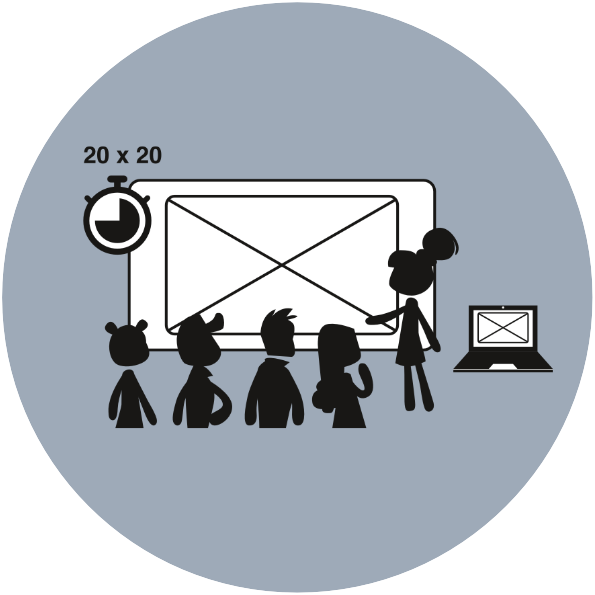
Generate energetic and short presentation sessions.
Eventually, you will need to present your idea. You can use Pecha Kucha (Method #16) for a short dynamic presentation round.
Tips for using the FUTE materials
- A typical design exercise would go through several rounds of the process rather quickly, iterating through phases of collaboration, challenge framing, researching, analysing, ideating, creating and communicating.
- Use the different FUTE methods in this Teacher Training Course to
familiarise yourself with the materials – but then, be sure to build a
set of materials that suit your own teaching and learning goals.
- Pick method cards and sequences that fit your specific project, the participant age group, time frame and learning journey.
- Try different approaches, get hands-on experience – and allow for mistakes, since they are vital elements of the innovation journey.
Introduction to Design Thinking
The FUTE method draws upon practices, approaches and methods from design practice, applied anthropology, marketing, creativity and organisation theory, management thinking and various other areas.
Its foundation is based on design thinking.
If this concept is new to you, we recommend that you read this introduction by Anne Katrine G. Gelting, Designer, Ph.d., Teaching Associate Professor at The Design School Kolding, Denmark – a partner in the FUTE project!

How to navigate the Teacher Training course
We believe that you can best learn about design thinking by doing.
Therefore, most of the FUTE Teacher Training course consists of solving design challenges and reflecting on your process.
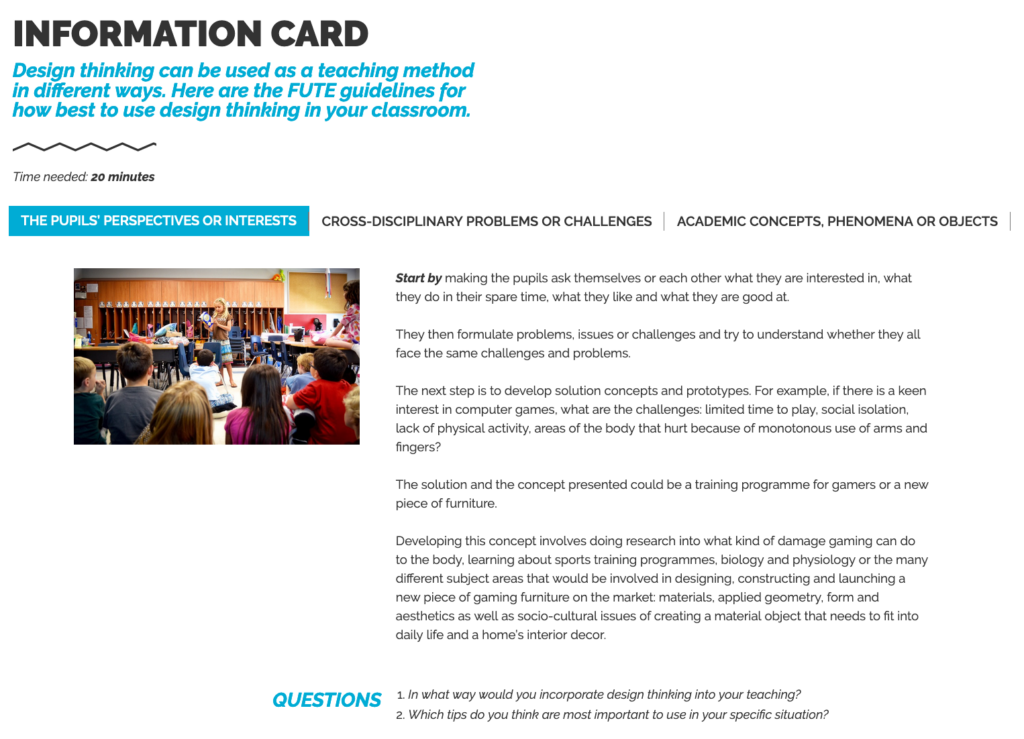
Information cards provide guidance and context about how to use design thinking and design challenges in schools and classrooms.
If a card is flagged, we highly recommend that you read it before proceeding to do design challenges.
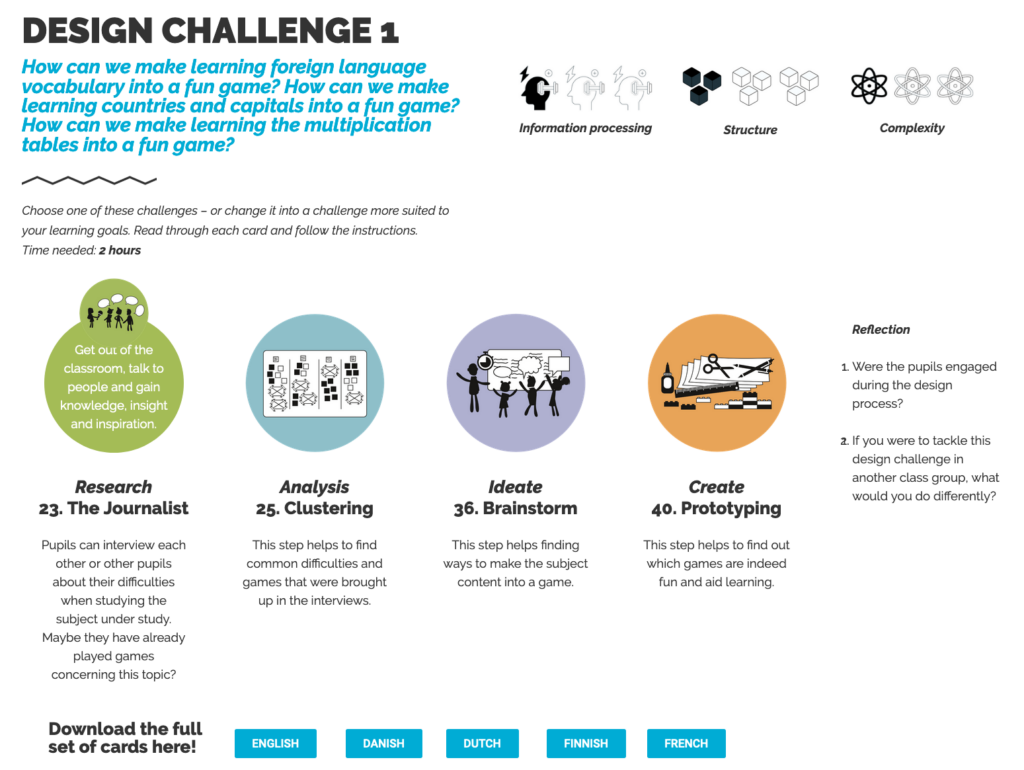
Design challenges are practical exercises that show you how you can use the FUTE Toolkit’s 42 activity cards and build your own challenges.
Each challenge provides a problem to solve, suggests which activity cards you could use – and asks you to reflect on your process.
A complexity scores indicates how difficult the challenge is, in terms of time required, new information to be processed, level of structure provided on the challenge card, and complexity of the underlying structure.
You can…
Use these cards and challenges individually, or combine them.
Use as many cards and challenges as you need to meet your goal, or as many as you can in the time you have.
All cards indicate the goal of that card and the time it will take, enabling you to choose which cards to use.
If you do all challenges in this training module, you will need about 25 hours to finish.
Ready? Go to the next chapter!
All FUTE project materials are licensed under CC BY-NC-SA 4.0
5C and 6C Models © Anne Katrine Gøtzsche Gelting and Silje K.A. Friis.




